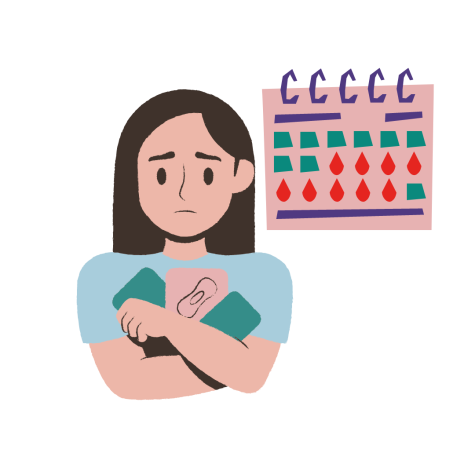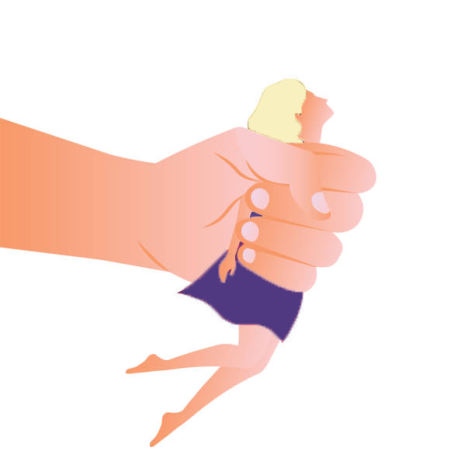Shrinking the Stigma: Understanding what therapy means today
March 16, 2019
The night before my first appointment, I laid on my bed and tried to keep up with my racing thoughts and feelings of nervousness and fear. Would tomorrow bring any solutions to my problems? Or would I find only more disappointment? What would my friends think? And yet, even with these dark musings clouding my reasoning, another emotion, one that I hadn’t felt for quite some time, was starting to make its presence known in my mind – hope. The next day I would be joining the 24% of youth in the US who go to therapy. Unfortunately, seeking help in regards to mental health is often stigmatized and seen in a negative light, prohibiting many young people from getting the support they need.
In the article titled Mental Health & Stigma by Graham C.L. Davey from Psychology Today, Davey writes that there are still attitudes within most societies that view symptoms of psychopathology as threatening and uncomfortable.
In another article titled The Stigma of Therapy by Dana Gionta from Psychology Today, Gionta identifies that a major misconception about people who go to therapy is that they are “crazy”. That stereotype is far from the truth, the reality is that most people who reach out for mental health support are often dealing with difficult life events. For example;
- Family issues
- End of romantic relationships/friendships
- Health challenges
- Decision making challenges
- Relocation
- Work/school stress
Some other common reasons why people seek therapy is if they are struggling with depression, anxiety, phobias, addiction, PTSD, ADHD, to treat problems and/or to learn healthy ways to cope (Psychology Today).
One thing we know for sure is that life will be hard at times. Many of us will experience some of the situations above. Reaching out for help is seen by some as a negative, and a scary unknown by those brave enough to admit they need support. Gionta even included concerns that people associate with therapy such as:
- What really happens in that room?
- Will I still be myself when I leave?
- If I go to a therapist, does that mean I’m crazy?
- What will others think?
According to Psychcentral, a psychology database, the concept of therapy was originated to treat the insane. This notion can be traced back to ancient history. Around the time of the fall of the Roman Empire, people saw the return of a belief in the supernatural as a cause for mental illness. Sigmund Freud also played a big role with his development of psychoanalysis in 1886, which is listening to the patient and providing interpretations, that would thus decrease symptoms. In 1986, the first doctor of psychology with a professional degree established the Department of Psychology at the University of Illinois.
Senior Lanie Schlueter, who has been seeing a therapist regularly for six months, knew she needed help in understanding the array of emotions she was dealing with on a daily basis, “I was just having really bad anxiety, and it was less than ideal because I would start crying in class. I even had to leave class sometimes.”
Schlueter also had some reservations and preconceived ideas about therapy. “When I knew I was going to go see a therapist, I thought I was going to sit in a dark room and they’d show me these weird paintings and say ‘what do you see?”
Schlueter believed that her issues weren’t as bad as the issues of people who see therapists regularly.
I just didn’t think it was that bad. I had friends that had crippling anxiety and they would have a panic attack if they walked into a room full of people,” Schlueter said.
According to the website Science Daily, in the article Putting feelings into words produces therapeutic effects in the brain by Stuart Wolpert, Wolpert writes about the healing powers of communication. “Putting our feelings into words, talking to a therapist or friend and even writing in a journal helps us to feel better.”
Little did I know, Wolpert’s advice would help me with being more open with my close friends and family.
Before I started seeing a therapist I was having anxious feelings that I couldn’t let go of, often times at night. This would go on for three to five days in a row, then go away, and a few months later they would come back again. Each time I would share my feelings with my parents but after a year of this cycle I realized it wasn’t going away and I need to talk to someone with expertise in this area. I viewed this much like if I had a physical illness that wasn’t getting better, I was tired of these feelings and wanted help, I wasn’t ashamed to do this because it is human nature to get help if you are not feeling okay. I think one reason why I wasn’t embarrassed was that I know a lot of good people who are amazing in so many ways that have gone to therapy for various reasons.
According to Psychology Today in the article, 8 more reasons to go to therapy by Ryan Howes, therapy can help remove roadblocks to self-esteem and teach you practical ways to make your happiness a priority, as well as help you uncover the passions buried under the busyness of life.
Senior Abby Blankenbiller has had anxiety since she was nine, at times she would beg her parents not to go to school. As she got older the anxiety progressively got worse, so Blankenbiller and her parents decided she should see a therapist, “I was really open about going to therapy. I was really excited to finally get to figure out what was happening with me, I felt really uncontrollable.”
An important piece to the success about going to therapy is finding the right therapist, for Abby that wasn’t the case.
“I felt like my dad would always tell me, ‘If you ever feel nervous or anything, you just have to lean on God, and put your entire faith in that.’ But for some reason that has just never been enough for me. My therapist was Christian, so she was telling me the same things that my dad was telling me, it didn’t really help,” Blankenbiller said.
Blankenbiller felt that relying on her faith and religion into her anxiety was not the big picture.
“I feel like if God really wanted you to get help, then there would be a professional, that’s why they’re there,” said Blankenbiller.
Students live in a world of unrealistic perfectionism that often sets them up for failure. More than ever students are feeling stressors from rigorous academic expectations, current social issues, family struggles or even fitting in, etc.
Gretchen Baker is a social worker who is at Southeast four and a half days a week.
“I get to talk to kids about so many different things. Kids come down about a dating or relationship concern, issue with a peer or maybe they’ve had a death or they’ve been abused in some way,” Baker said.
Another obstacle for seeing a therapy is getting the parents on board, with seeing a therapist.
“I feel like our kids come down and ask for help, and they’re willing and excited to hear suggestions on how they can get help or improve thing, our counselors and our teachers are great. Every once in a while it’s getting parents on board,” Baker said.
For myself I didn’t realize the effects of the stressors in my life were having on me until I started seeking therapy. From that point on I’ve learned ways of coping during hard times.
It is widely accepted that therapy has a positive impact on helping those with mental health and mental illness. Yet the wall of stigma often prevents people from getting help. My friends and I and many others that I know are open and honest when they are struggling with problems in their life instead of sweeping them under the rug like older generations have done. I believe our generation will do so much to help our society get over the stigmas of reaching out to get help when someone needs it.













